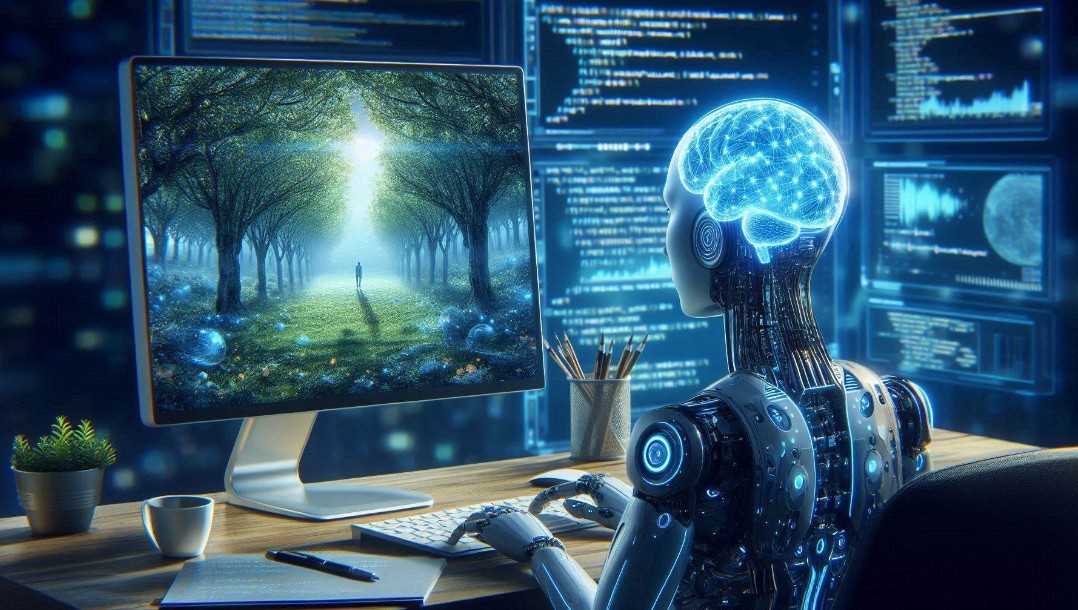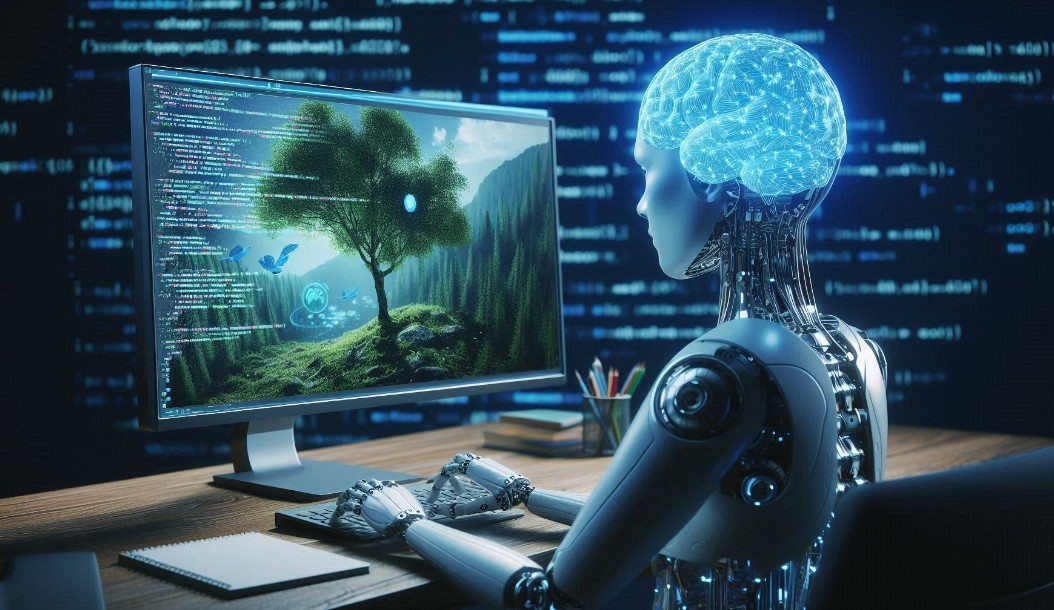In recent years, there has been a significant advancement in the field of Artificial Intelligence (AI) and Augmented Reality (AR). These technologies have become increasingly popular and have the potential to enhance virtual experiences in various fields such as gaming, education, healthcare, and...
AI Mastery in Transforming Text into Lifelike Videos

In a groundbreaking advancement, artificial intelligence (AI) has reached a new milestone: the ability to generate realistic videos from mere text descriptions. This innovation is not only a testament to the rapid progress in AI technology but also a harbinger of how digital content creation could evolve in the near future. By transforming words into vivid, lifelike scenes, AI is pushing the boundaries of what is possible in multimedia and storytelling.
The technology behind this leap combines the prowess of natural language processing (NLP) and generative adversarial networks (GANs). NLP allows the AI to understand and interpret the nuances of human language, while GANs enable the creation of high-quality visual content. When these two powerful technologies intersect, the result is an AI capable of rendering scenes that align closely with the descriptive text, making the imaginary tangible.
The implications of this development are vast and varied. From revolutionizing the entertainment industry to enhancing educational tools, the potential applications are numerous. Filmmakers and content creators can use AI to bring their visions to life more efficiently, while educators can create immersive learning experiences that were previously unimaginable. Additionally, this technology holds promise for accessibility, offering new ways for individuals with disabilities to experience visual content through descriptive narratives.
However, the advent of text-to-video AI also raises important questions about the ethical use of such technology. As with any powerful tool, the potential for misuse exists, and it is crucial to address concerns around deepfakes and misinformation. Ensuring responsible development and deployment of AI-generated videos will be key to harnessing its benefits while mitigating risks.
As AI continues to evolve, its ability to create realistic videos from text is a clear indicator of the transformative impact it will have on our digital world. This technology not only enhances creative expression but also opens up new avenues for communication and interaction. The journey from words to visual storytelling is becoming more seamless and sophisticated, heralding a new era in the realm of artificial intelligence.
How AI Generates Realistic Videos
Artificial Intelligence (AI) has made significant strides in generating realistic videos from text descriptions. This process involves multiple sophisticated techniques that work in unison to produce high-quality, lifelike video content. Here's a closer look at how AI achieves this remarkable feat.
1. Natural Language Processing (NLP)
The journey begins with Natural Language Processing (NLP), which enables the AI to understand and interpret the input text. NLP algorithms analyze the text to identify key elements such as objects, actions, and scenes described. This step is crucial as it lays the foundation for the visual representation of the textual description.
2. Text-to-Image Generation
Once the text is processed, the AI uses text-to-image generation models to create still images that represent different frames of the video. Generative Adversarial Networks (GANs) and Variational Autoencoders (VAEs) are often employed in this stage. These models generate high-resolution images by learning from vast datasets of annotated images.
3. Image Sequence Synthesis
The next step involves synthesizing a sequence of images to form a coherent video. This is achieved through advanced techniques like video GANs and recurrent neural networks (RNNs). These models ensure smooth transitions between frames, maintaining consistency in motion and appearance.
4. Motion Dynamics and Physics Simulation
To enhance the realism of the generated videos, AI incorporates motion dynamics and physics simulation. By simulating real-world physical interactions, such as gravity and collision, the AI ensures that the movements of objects and characters in the video adhere to natural laws, adding to the believability of the scenes.
5. Fine-Tuning and Post-Processing
The final step involves fine-tuning and post-processing. AI models refine the video by adjusting colors, lighting, and textures to enhance visual appeal. Additionally, post-processing algorithms can add effects such as depth of field, motion blur, and other cinematic qualities that contribute to the overall realism of the video.
Through these intricate steps, AI is able to transform text descriptions into realistic videos, opening up new possibilities in fields such as entertainment, education, and virtual reality. As AI technology continues to advance, we can expect even more impressive and lifelike video content to emerge from textual inputs.

Understanding Text-to-Video Technology
Text-to-video technology represents a groundbreaking advancement in artificial intelligence, enabling the creation of realistic video content directly from textual descriptions. This innovative technology leverages advanced deep learning models to interpret and visualize textual input into dynamic and coherent video sequences.
The Core Components of Text-to-Video Systems
At the heart of text-to-video systems are complex neural networks, primarily involving Generative Adversarial Networks (GANs) and transformer models. GANs consist of two main components: a generator that creates video frames and a discriminator that evaluates their realism. The interaction between these two networks results in increasingly realistic video outputs over time.
Transformer models, on the other hand, excel at understanding and processing natural language. These models analyze the input text, capturing the context, intent, and detailed descriptions necessary to generate corresponding visual content. By integrating these models, text-to-video systems can generate video sequences that accurately reflect the nuances of the provided textual descriptions.
Applications and Implications
The potential applications of text-to-video technology are vast and varied. In the entertainment industry, it could revolutionize how movies and animations are produced, allowing for rapid prototyping and creative experimentation. In education, this technology can be used to create engaging and illustrative video content from textbooks and lecture notes, enhancing learning experiences.
Moreover, text-to-video technology holds promise in fields such as advertising, personalized content creation, and even virtual reality. By automating the video production process, businesses can produce tailored marketing materials quickly and cost-effectively. However, as with any powerful technology, ethical considerations must be addressed to prevent misuse and ensure that content generation respects privacy and intellectual property rights.
In summary, text-to-video technology is poised to transform multiple industries by providing a novel way to create visual content from text. As the technology continues to evolve, its impact on media production, education, and communication will likely become increasingly significant.
Applications and Future of AI in Media
Artificial Intelligence (AI) is revolutionizing the media landscape, bringing innovations that were once the realm of science fiction into reality. The applications of AI in media are vast and diverse, ranging from content creation to audience engagement and beyond.
Content Creation: AI is enabling the creation of highly realistic videos from textual descriptions. This technology allows for the production of video content at an unprecedented scale and speed, reducing the need for large production crews and extensive shooting schedules. AI-generated videos can be used in various domains such as advertising, entertainment, and education, providing a dynamic and engaging way to convey information.
Personalized Content: One of the most significant advantages of AI in media is its ability to tailor content to individual preferences. By analyzing user data and behavior, AI algorithms can recommend personalized content, ensuring that viewers are presented with media that is most relevant to their interests. This personalization enhances user engagement and satisfaction, fostering a more loyal audience base.
Enhanced Editing and Production: AI-powered tools are transforming the editing and production process. Automated editing software can cut, splice, and enhance footage more efficiently than traditional methods. These tools can also apply special effects, correct color, and even generate missing scenes, significantly reducing post-production time and costs.
Journalism and Reporting: AI is making strides in the field of journalism, where it can assist in researching and writing articles. AI-driven analytics can sift through vast amounts of data to identify trends and insights, helping journalists to report more accurately and comprehensively. Additionally, AI can generate reports and summaries for routine news, allowing journalists to focus on more complex investigative stories.
Future Prospects: The future of AI in media looks promising, with continuous advancements expected to bring even more sophisticated applications. Emerging technologies such as deepfake, while controversial, also demonstrate the potential for creating highly realistic virtual experiences. Moreover, AI could further enhance virtual and augmented reality, creating immersive media environments that blur the line between the digital and physical worlds.
As AI continues to evolve, it will undoubtedly reshape the media industry in ways that are both exciting and challenging. The integration of AI promises to not only improve efficiency and creativity in media production but also to transform how audiences consume and interact with content.



